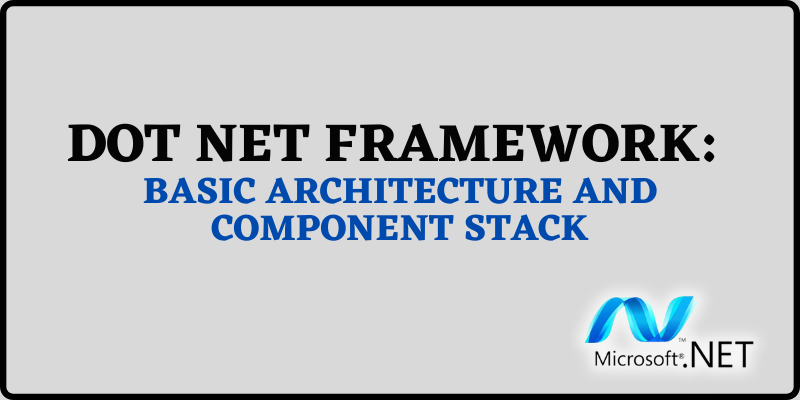
In this blog, we will enhance the basic architecture and component stack in Dot NET. Microsoft launches the Dot Net Framework, a platform for creating and operating Windows applications. Building desktop and web apps are made possible by the Dot Net framework, which includes developer tools, programming languages, and libraries. The creation of websites, web services, and video games also uses it.
It is employed in the creation of web-based uses, web services, and form-based applications. The.Net platform supports a number of coding, with javascript, VB.Net and C# being the most popular ones. Applications for Windows, phones, the web, etc. are created using it. It offers a variety of services and backs industry standards.
To learn more about the use of dot net, join Dot Net Training in Chennai at FITA Academy.
Types of Applications :
WinForms :
Applications that use a form fall into this category. Simply said, client-based applications that read from and write to the file system fall into this category.
ASP Dot Net:
Web-based programs fall into this category. ASP.Net is a web framework that offers fantastic HTML, CSS, and JavaScript integration, making it helpful for creating online services, websites, and web applications. Web services have been included. ASP.NET web apps are thought to be a part of Net Framework 2.0.
ADO Dot NET :
It covers software programs made to interact with databases like MySQL Server, Oracle, and others. The classes needed to connect, retrieve, insert, and remove data make up the majority of it.
Dot Net Online Course will enhance your technical skills and also Difference Between Dot Net core and Dot Net frameworks.
Architecture and Component Stack
1. Common Language Runtime (CLR)
It is a run-time environment that puts any.NET programming language code to use. Numerous languages, including C#, F#, C++, Cobra, Jscript Dot Net, VB.Net, Oxygene, etc., are enabled by the.Net framework.
2. Framework Class Library (FCL)
This framework, referred to as FCL, contains a sizable number of class libraries.
3. Windows Presentation Foundation (WPF)
Windows-based apps that employ DirectX and the Windows Present Foundation (WPF) graphics module for creating user interfaces (User Interface). WPF, formerly known as “Avalon,” was first made available in 2006 as a component of the.NET Framework 3.0.
4. WCF (Windows Communication Foundation)
It is a framework for creating networked, service-oriented applications that communicate data in an irregular fashion between service ends. It was once known to as the Indigo.
5. WF (Windows Workflow Foundation)
It is a Microsoft technology that offers a framework for creating processes inside of.Net applications.
6. Token Space
It is a Microsoft.NET Framework software client that enables users to securely, easily, and reliably deliver their digital identities to internet services.
7. LINQ (Language Integrated Query)
Version 3.5 of the.Net framework is when it first appears. Essentially, it is a query language use with the VB or C# computer languages to query data sources.
8. Entailment Framework
It is an open-source framework built on the ORM (Object Relational Mapping) technology that comes with Dot Net Framework version 3.5. It lets the Dot Net developer use Dot Net objects to link with databases. Before the entity framework, Dot Net coders dealt with a variety of database-related tasks. Developers must build a Data Set to fetch or submit data to the database, and transform the data from the Data Set to.NET objects, or vice versa, just as they would when opening a connection to the database. In order to automate all of these database-related tasks for the application, “Entity Framework” is introduces. This procedure presents a challenge for developers and is also prone to errors. The developers may now operate at a greater level of abstraction thanks to Entity Framework.
9. Relative LINQ (Language Integrated Query)
PLINQ is a part of the Dot Net Framework version 4.0. It gives a parallel runtime engine for LINQ. In an effort to increase the processing power of the system on which it is operating, it performs the LINQ simultaneously.
So far, we have discussed the basic architecture and component stack in Dot NET. Develop Forms-based apps, Web-based programs, and Web services using the Dot Net programming language. On the Microsoft .NET base system, developers have access to a variety of programming languages. The two most popular ones are C# and VB.Net.
Enroll in Dot Net Training in Coimbatore to develop your skills in the dot Net domain.
Also Read: Dot Net Interview Questions and Answers